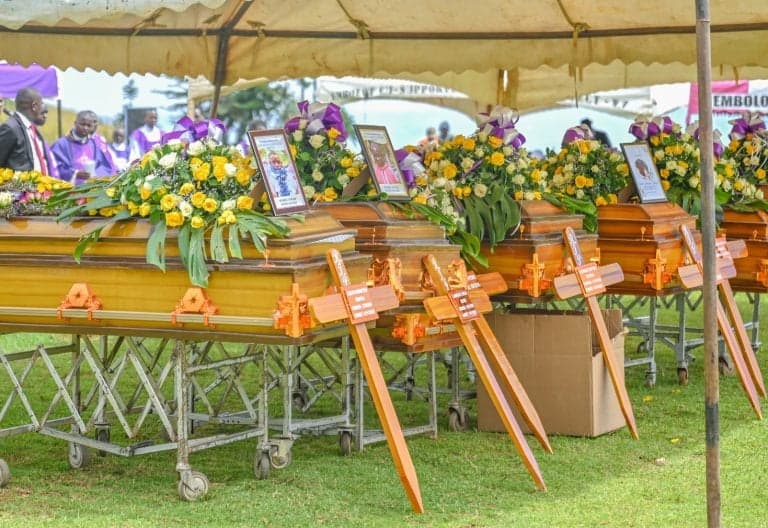Loading News Article...
We're loading the full news article for you. This includes the article content, images, author information, and related articles.
We're loading the full news article for you. This includes the article content, images, author information, and related articles.
The government has committed to covering funeral expenses and resettling families displaced by the Elgeyo Marakwet landslide, a disaster experts attribute to widespread deforestation and climate change.

MARAKWET EAST, Elgeyo Marakwet County – Amidst ongoing search and rescue operations, the Kenyan government has pledged comprehensive support for families devastated by the recent landslides in Elgeyo Marakwet County. Speaking on behalf of the government, Cabinet Secretary for Roads and Transport, Kipchumba Murkomen, assured affected residents that the state would cover all medical and funeral expenses and facilitate the resettlement of displaced households to safer locations. The announcement came as a community gathered on Wednesday, November 19, 2025, to bury eight members of a single family who perished in the tragedy.
The landslide, which struck the villages of Chesongoch, Kamoko, and Moror on the night of Friday, October 31, 2025, was triggered by torrential rains saturating the steep slopes of the Kerio Valley. As of November 14, officials had confirmed 39 fatalities, with dozens more injured or missing. The disaster has displaced over 400 families, many of whom are now sheltering in local schools and community centers.
CS Murkomen described the event as a "national catastrophe," attributing the devastating impact to years of unchecked deforestation and unsustainable farming practices that have destabilized the region's fragile escarpments. "The biggest problem with this issue is deforestation, the problem of landlessness," Murkomen stated in Eldoret on November 2, 2025. This assessment is supported by geological experts who have long warned that human activities, including slope excavation for housing and overgrazing, have significantly increased the region's vulnerability. The Elgeyo Escarpment is a steep, geologically fragile feature of the Rift Valley, and experts have cautioned for over a decade that settlement on its slopes is unsafe. Climate change is expected to worsen the situation, with projections indicating a 20–30% increase in landslide frequency in the Rift Valley by 2050.
A multi-agency response is underway, involving the Kenya Defence Forces, the National Police Service, and the Kenya Red Cross Society. Helicopters have been crucial for ferrying medical teams, rescue personnel, and supplies to areas cut off by destroyed roads and debris. The Kenya Red Cross has deployed drones to survey inaccessible areas and assist in the search for survivors. However, rescue efforts have been hampered by the difficult terrain and persistent rainfall.
The national government, through the State Department for Special Programmes, has dispatched relief supplies, including food, blankets, and mattresses, to the affected communities. Elgeyo Marakwet Governor Wisley Rotich confirmed that the county has established a command center to coordinate operations and has urged residents in high-risk zones to evacuate to safer ground immediately. The Ministry of Interior and National Administration, which is responsible for coordinating national disaster management, has echoed these calls, warning that the entire Kerio Valley remains under threat.
The November 2025 landslide is the latest in a series of similar disasters to strike the region, which has a tragic history of fatal mudslides in 2010, 2012, and 2020. The recurring nature of these events has intensified calls for durable solutions beyond immediate humanitarian aid. During a prayer service in Nairobi on November 13, 2025, community leaders and professionals urged the government to fast-track the mapping of hazardous zones and implement permanent relocation plans for at-risk settlements. There is a growing consensus that long-term mitigation must include aggressive reforestation, improved land-use management, and the construction of structural safeguards like retaining walls. The tragedy serves as a stark reminder of the urgent need to bridge the gap between scientific warnings and policy implementation to protect vulnerable communities across Kenya.